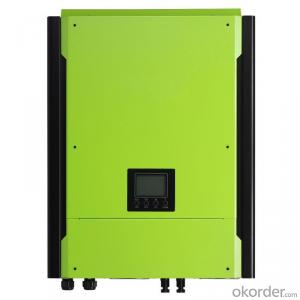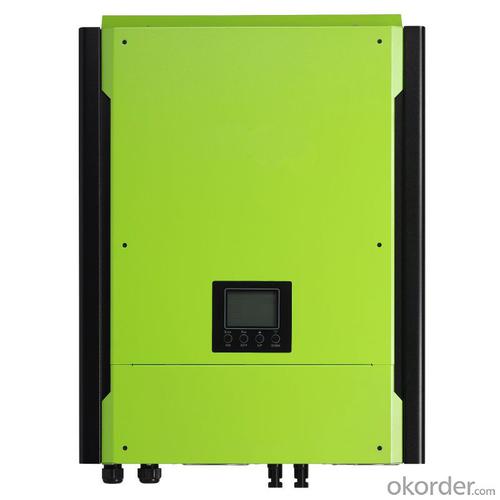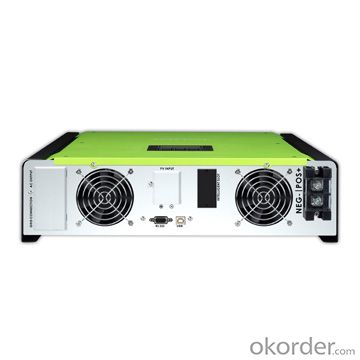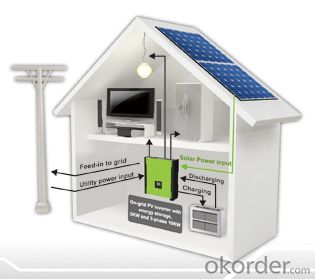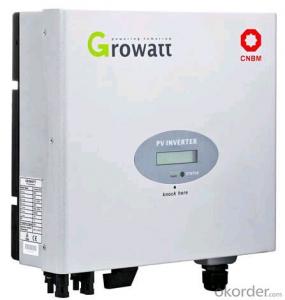Best Hybrid Solar Inverter - On-Grid Energy Storage PV Inverter PH500 Series 1-Phase 2kW-3kW Competitive Price
- Loading Port:
- China main port
- Payment Terms:
- TT OR LC
- Min Order Qty:
- 10 pc
- Supply Capability:
- 1000 pc/month
OKorder Service Pledge
OKorder Financial Service
You Might Also Like
Features:
. 2KW/3KW/5KW on-grid inverter with energy storage
. Pure sine wave output
. Microprocessor controlled to guarantee stable charging system
. Multiple operations: Grid tie, Off grid, and grid-tie with backup
. Built-in MPPT solar charger
. LCD display panel for comprehensive information
. Multiple communication
. Green substitution for generators
. User-adjustable battery charging current
On-grid PV Inverter with Energy Storage – PH500 3KW
| Model | PH500 Single-phase 2KW | PH500 Single-phase 3KW | |
| RATED POWER | 2000 W | 3000 W | |
| GRID-TIE OPERATION | |||
| PV INPUT (DC) | |||
| Maximum DC Power | 2250W | 3200W | |
| Nominal DC Voltage / Maximum DC Voltage | 300 VDC / 350 VDC | 360 VDC / 500 VDC | |
| Start-up Voltage / Initial Feeding Voltage | 80 VDC / 120 VDC | 116 VDC / 150 VDC | |
| MPP Voltage Range | 150 VDC ~ 320 VDC | 250 VDC ~ 450 VDC | |
| Number of MPP Trackers / Maximum Input Current | 1 / 1 x 15 A | 1 / 1 x 13 A | |
| GRID OUTPUT (AC) | |||
| Nominal Output Voltage | 101/110/120/127 VAC | 208/220/230/240 VAC | |
| Output Voltage Range | 88 - 127 VAC* | 184 - 264.5 VAC* | |
| Nominal Output Current | 18 A | 13.1 A* | |
| Power Factor | > 0.99 | ||
| EFFICIENCY | |||
| Maximum Conversion Efficiency (DC/AC) | 95% | 96% | |
| European Efficiency@ Vnominal | 94% | 95% | |
| OFF-GRID OPERATION | |||
| AC INPUT | |||
| AC Start-up Voltage/Auto Restart Voltage | 60 - 70 VAC / 85 VAC | 120 - 140 VAC / 180 VAC | |
| Acceptable Input Voltage Range | 85 - 130 VAC* | 170 - 280 VAC | |
| Number of MPP Trackers / Maximum Input Current | 30 A | 25 A | |
| PV INPUT (DC) | |||
| Maximum DC Voltage | 350 VDC | 500 VDC | |
| MPP Voltage Range | 150 VDC ~ 320 VDC | 250 VDC ~ 450 VDC | |
| Maximum Input Current | 1 / 1 x 15 A | 1 / 1 x 13 A | |
| BATTERY MODE OUTPUT (AC) | |||
| Nominal Output Voltage | 101/110/120/127 VAC | 208/220/230/240 VAC | |
| Output Waveform | Pure Sinewave | ||
| Efficiency (DC to AC) | 90% | 93% | |
| HYBRID OPERATION | |||
| PV INPUT (DC) | |||
| Nominal DC Voltage / Maximum DC Voltage | 300 VDC / 350 VDC | 360 VDC / 500 VDC | |
| Start-up Voltage / Initial Feeding Voltage | 80 VDC / 120 VDC | 116 VDC / 150 VDC | |
| MPP Voltage Range | 150 VDC ~ 320 VDC | 250 VDC ~ 450 VDC | |
| Maximum Input Current | 1 / 1 x 15 A | 1 / 1 x 13 A | |
| GRID OUTPUT (AC) | |||
| Nominal Output Voltage | 101/110/120/127 VAC | 208/220/230/240 VAC | |
| Output Voltage Range | 88-127 VAC | 184 - 264.5 VAC | |
| Nominal Output Current | 18 A | 13.1 A* | |
| AC INPUT | |||
| AC Start-up Voltage/Auto Restart Voltage | 60 - 70 VAC / 85 VAC | 120 - 140 VAC / 180 VAC | |
| Acceptable Input Voltage Range | 80 - 130 VAC* | 170 - 280 VAC | |
| Maximum AC Input Current | 30 A | 25 A | |
| BATTERY MODE OUTPUT (AC) | |||
| Nominal Output Voltage | 101/110/120/127 VAC | 208/220/230/240 VAC | |
| Efficiency (DC to AC) | 90% | 93% | |
| BATTERY & CHARGER | |||
| Nominal DC Voltage | 48 VDC | 48 VDC | |
| Maximum Charging Current | 25A | 25A | |
| GENERAL | |||
| PHYSICAL | |||
| Dimension, D x W x H (mm) | 420 x 415 x 170 | ||
| Net Weight (kgs) | 15.5 | ||
| INTERFACE | |||
| Communication Port | RS-232/USB | ||
| Intelligent Slot | Optional SNMP, Modbus, and AS-400 cards available | ||
| ENVIRONMENT | |||
| Humidity | 0 ~ 90% RH (No condensing) | ||
| Operating Temperature | 0 to 40°C | ||
| Altitude | 0 ~ 1000 m** | ||
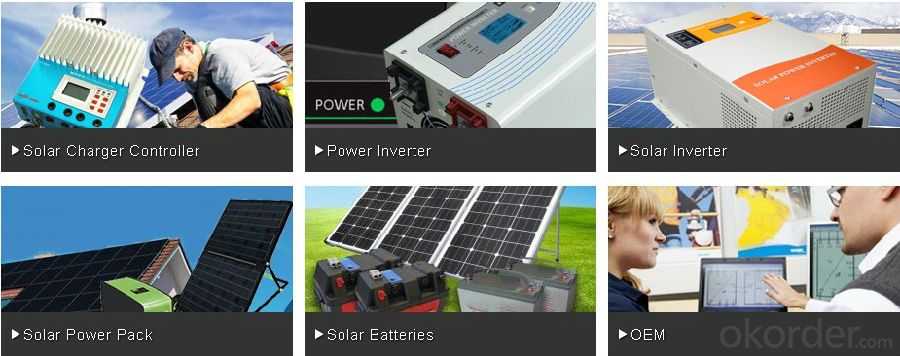
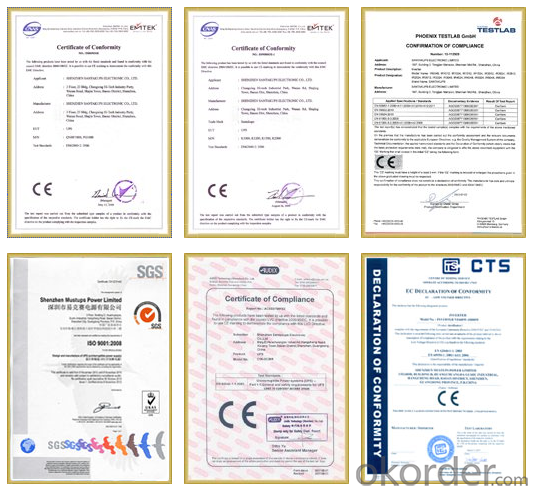
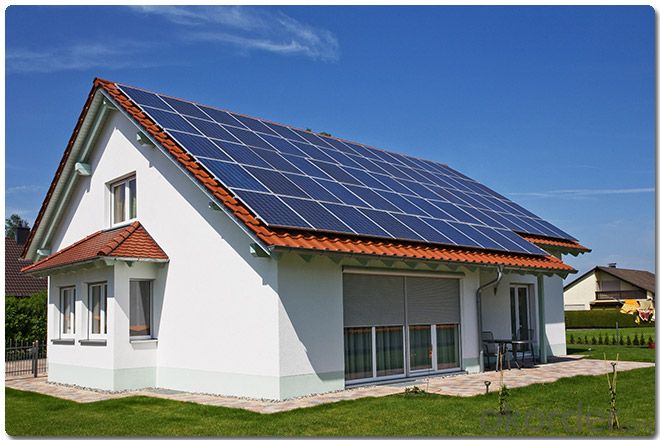
Warranty
provides a 1~3 year limited warranty (“Warranty”) against defects in materials and workmanship for its Uninterruptible power supply, Power inverter/chargers, Solar charge controllers, Battery Products (“Product”).
The term of this Warranty begins on the Product(s) initial purchase date, or the date of receipt of the Product(s) by the end user, whichever is later. This must be indicated on the invoice, bill of sale, and/or warranty registration card submitted to MUST-Solar. This Warranty applies to the original MUST-Solar Product purchaser, and is transferable only if the Product remains installed in the original use location.
FAQ
1. How do I decide which system is right for me ?
For protection from long outages, include a generator or solar panels in your Must solar system. Shorter outages can be handled by a battery-only system.
2. Where my system will be installed ?
Must solar systems are usually wall-mounted near a home's main electrical (circuit breaker) panel.
3. How do I install my system ?
A must solar backup inverter is connected to a home electric system , we will supply detailed installation manual and videos for our customers .
- Q: Can a solar inverter be used with different types of backup power configurations?
- Yes, a solar inverter can be used with different types of backup power configurations. Solar inverters are designed to convert the DC power generated by solar panels into AC power that can be used in homes or businesses. They can be used with backup power systems such as battery banks, diesel generators, or grid-tied systems with net metering. The inverter's ability to synchronize with different backup power sources allows for efficient and reliable energy supply in various configurations.
- Q: Can a solar inverter be used in a ground-mounted solar tracking system?
- Yes, a solar inverter can be used in a ground-mounted solar tracking system. The solar inverter is responsible for converting the direct current (DC) generated by the solar panels into alternating current (AC) that can be used to power electrical devices or be fed back into the grid. Whether the solar panels are fixed or mounted on a tracking system, the inverter's function remains the same.
- Q: Can a solar inverter be used in harsh environmental conditions?
- Yes, a solar inverter can be used in harsh environmental conditions. Most solar inverters are designed to withstand a wide range of environmental factors such as extreme temperatures, humidity, dust, and vibrations. They are often built with durable materials and have protective coatings to prevent damage from harsh weather conditions. Additionally, many solar inverters are equipped with advanced cooling mechanisms to prevent overheating in hot climates. However, it is important to note that the specific durability and performance of a solar inverter in harsh conditions may vary depending on the brand and model. It is recommended to choose a reliable and high-quality solar inverter that is specifically designed for use in harsh environmental conditions to ensure optimal performance and longevity.
- Q: How does a solar inverter prevent reverse current flow?
- A solar inverter prevents reverse current flow by using built-in diodes that act as one-way valves, allowing electricity to flow only in the desired direction from the solar panels to the grid or battery system.
- Q: How do you choose the right size solar inverter for a specific solar power system?
- Choosing the right size solar inverter for a specific solar power system requires careful consideration of various factors. Here are some steps to help you make the right choice: 1. Determine your solar power system's capacity: Start by calculating the total capacity of your solar power system. This involves determining the total wattage of all your solar panels combined. This information can usually be found on the product specifications or by consulting with your solar panel manufacturer. 2. Consider your average energy consumption: Assess your average energy consumption to determine the size of the solar inverter needed to meet your requirements. Consider your peak power usage and any potential future increase in energy demands. 3. Evaluate the inverter's capacity: Match the capacity of the solar inverter with your solar power system's capacity. The inverter's capacity should be equal to or slightly higher than your system's total capacity to ensure optimal performance. 4. Consider the inverter's efficiency: Look for an inverter with high efficiency ratings. A higher efficiency rating means that it can convert a larger percentage of the solar energy into usable electricity, minimizing power losses. 5. Determine the inverter type: Decide on the type of solar inverter suitable for your system. There are three main types: string inverters, microinverters, and power optimizers. String inverters are the most common and cost-effective option for small to medium-sized systems, while microinverters and power optimizers are better suited for complex installations or systems with shading issues. 6. Assess the inverter's features: Consider additional features that the solar inverter may offer. Look for features such as monitoring capabilities, grid integration capabilities, and built-in safety features like arc fault protection or rapid shutdown. 7. Consult with professionals: If you are uncertain about the right size solar inverter for your specific solar power system, it is advisable to consult with a professional solar installer or an electrical engineer. They can help assess your energy needs, system requirements, and provide expert guidance on selecting the appropriate inverter size. Remember, choosing the right size solar inverter is crucial for the overall performance and efficiency of your solar power system. Taking the time to evaluate your system's requirements and seeking expert advice will help ensure you make an informed decision.
- Q: What is the maximum DC voltage that a solar inverter can handle?
- The maximum DC voltage that a solar inverter can handle varies depending on the specific model and manufacturer. However, in general, most solar inverters can handle DC voltages up to around 1000V.
- Q: Can a solar inverter be used with different types of power control devices?
- Yes, a solar inverter can be used with different types of power control devices. Solar inverters are designed to convert the direct current (DC) produced by solar panels into alternating current (AC) that can be used to power various electrical devices. They can be integrated with different power control devices such as charge controllers, smart energy management systems, and battery storage systems to optimize the efficiency and performance of the solar power system.
- Q: What is the role of a voltage regulator in a solar inverter?
- The role of a voltage regulator in a solar inverter is to ensure that the voltage output from the solar panels is regulated and maintained at a consistent level, regardless of variations in sunlight intensity. This is important for the efficient and safe operation of the inverter, as it prevents overvoltage or undervoltage conditions that could damage the inverter or connected equipment.
- Q: Can a solar inverter be used with building-integrated photovoltaics (BIPV)?
- Yes, a solar inverter can be used with building-integrated photovoltaics (BIPV). The solar inverter is an essential component that converts the DC power generated by the BIPV system into AC power suitable for use in buildings. It ensures efficient utilization of the solar energy produced by the BIPV system and enables integration with the electrical grid or building's power system.
- Q: What is the role of a solar inverter in a grid-independent system?
- The role of a solar inverter in a grid-independent system is to convert the direct current (DC) electricity generated by solar panels into alternating current (AC) electricity that can be used to power household appliances and other electrical devices. It also regulates the voltage and frequency of the electricity to ensure compatibility with the electrical grid. In a grid-independent system, the solar inverter allows for the utilization of solar power without relying on the traditional power grid, enabling self-sufficiency and reducing dependence on fossil fuels.
Send your message to us
Best Hybrid Solar Inverter - On-Grid Energy Storage PV Inverter PH500 Series 1-Phase 2kW-3kW Competitive Price
- Loading Port:
- China main port
- Payment Terms:
- TT OR LC
- Min Order Qty:
- 10 pc
- Supply Capability:
- 1000 pc/month
OKorder Service Pledge
OKorder Financial Service
Similar products
Hot products
Hot Searches
Related keywords
